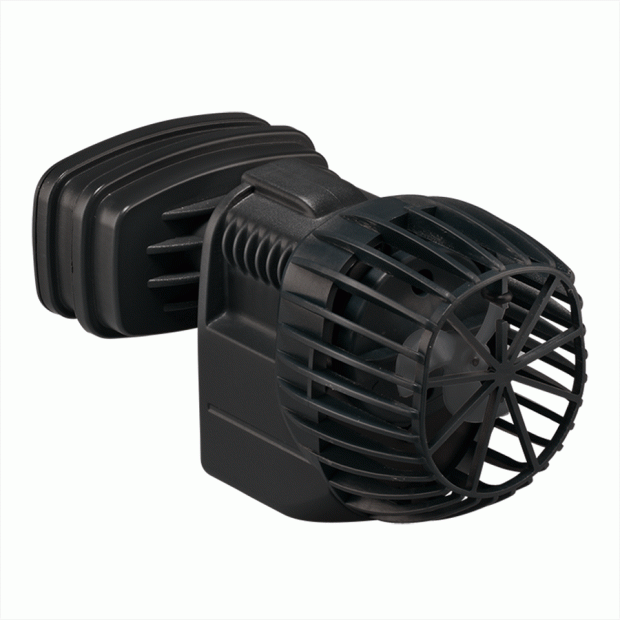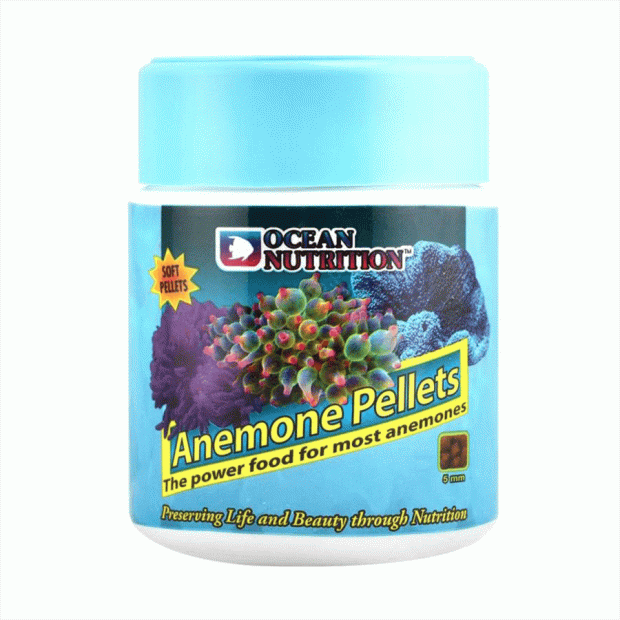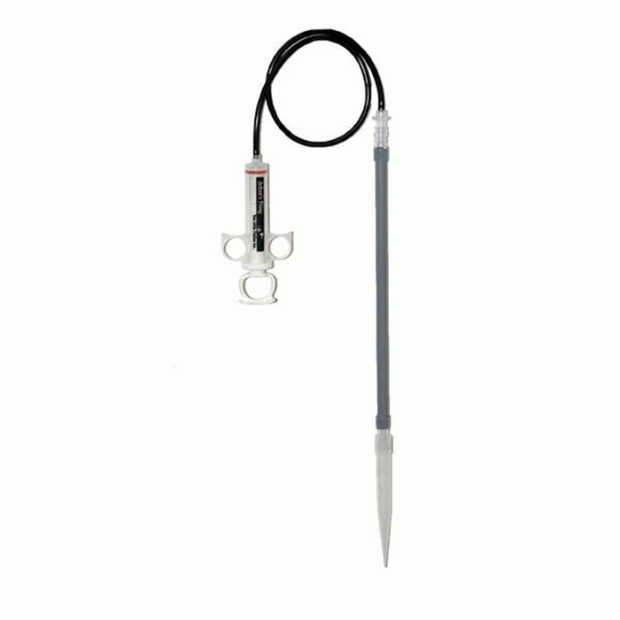- Colours, patterns, and size may vary
- Very challenging species to keep
- Grows to max diameter of ~1m
Overview
Everything you need to know about Striped Carpet Anemone, at a glance:
- Common Names: Giant Carpet Anemone, Haddon’s Carpet Anemone
- Scientific Name: Stichodactyla haddoni
- Max Size: ~1m
- Temperature Range: 23-27°C
- pH Range: 8.2-8.4
- Salinity Range (SG): 1.024-1.026
- Compatibility: Not reef-safe
- Area Of Origin: Indo-Pacific
- Suitable Foods: Meaty foods, such as cut up smelt, mussels, and shrimps
- Special Requirements: Challenging species to keep, need deep sand bed of at least 12.5cm, only add to aquariums at least 6 months old
What is a Striped Carpet Anemone?
Carpet Anemones, also known as Haddon’s Carpet Anemones, are a large species of anemone that inhabit shallow seas in the Indo-Pacific area. They’re amongst the most challenging saltwater animals to keep, with many specialist requirements that should dissuade beginner reef keepers. That said, they’re fascinating to watch and, if looked after correctly, can be incredibly rewarding.
Like several other types of anemones, Carpet Anemones are motile and can (and will) move around your aquarium. They also host anemonefish like Clownfish, providing a mobile environment in which they can breed. This ability to ‘walk’ around your aquarium has its downsides, however. Carpet Anemones are venomous and will harm other fish and corals. For this reason, avoid stocking them in a reef tank.
Carpet Anemones come in many different shapes, patterns, and colours. This striped variety is characterised by its subtle beige and white stripes. We also sell some varieties with metallic blue polyps and lime green polyps. Most Carpet Anemones take on a circular shape, though as they move they fold in on themselves, resembling a crumpled ‘carpet’.
How do I care for a Striped Carpet Anemone?
As mentioned above, Carpet Anemones are incredibly difficult to care for. They’re delicate and need to be kept in a large, established aquarium that’s at least six months old, preferably older. They also require impeccable water quality and stable water parameters – anyone planning to keep one of these challenging giants needs to be diligent when it comes to water changes.
Like other anemones, Carpet Anemones can pose a danger to your aquarium’s other inhabitants, particularly stationary corals. This is one of several reasons why those who keep Carpet Anemones tend to keep them in a large aquarium that focuses solely on them, and a few anemonefishes, as the aquarium’s main display. They can be kept with corals and other fish, though this must be done with extreme caution.
Carpet Anemones are aggressive eaters and benefit greatly from spot feeding with meaty foods like smelt, mussels, and shrimps. These foods should be cut/shredded to the appropriate size for the anemone’s mouth and offered with a pair of tongs. If the chunks are too large, the anemone may regurgitate them, causing them internal damage. They also need to be fed at least once a week to stop them hunting their other tankmates.
As sand-dwelling anemones, Carpet Anemones need to be kept on a deep sand bed of at least 12.5cm. Unlike other anemones that tend to attach themselves to rock, these anemones have a ‘foot’ that they bury deep into sand, keeping them anchored. Other specialist requirements include moderate-high lighting, low-moderate flow, and an aquarium with a huge filtration capacity (to cope with the meat-heavy feedings).
It’s also recommended that Carpet Anemones are quarantined for at least a week before they’re added to an established aquarium. They’re prone to shipping stress and often develop bacterial infections during transit. These ailments need treating with antibiotics and other medications before they can be introduced to their new home; not just for their own safety, but the safety of their new tankmates too.
How is this Striped Carpet Anemone delivered?
All of our aquatic animals are dispatched from our livestock distributor and delivered directly to your door. Our distributor dispatches and delivers livestock packages Tuesday through Friday to avoid animals being in transit over the weekend.
After placing your livestock order, you’ll receive all the information needed to track your livestock order via email. If you have any problems regarding delivery, or concerns about the health/wellbeing of your animal(s) upon arrival, please contact us, Swell UK Ltd, immediately, or at least within 48 hours of receiving your livestock order.
Any other, non-livestock items that you purchase alongside livestock will be sent via standard or express delivery and arrive at your delivery address in a different package. This means that, depending on when you place your order, you may receive your non-livestock items before or after your livestock package.
For a detailed breakdown of when you can expect to receive your livestock package depending on the day you place your order, be sure to check the delivery details in the specifications below.
How do you acclimate a Striped Carpet Anemone?
It’s very important that you acclimatise new animals to your aquarium. This is the process of gradually adjusting an animal to its new environment and it’s especially important in an aquatic setting where sudden changes in water temperature, pH, and salinity can cause stress, illness and, in some cases, even death.
Before you acclimate your Carpet Anemone, it’s recommended that you put on a pair of water-proof gloves (rubber gloves work fine). This will stop your Carpet Anemone from stinging you and protect them from any toxic substances/residue that may be present on your hands.
To acclimate your Carpet Anemone, place the bag with the anemone inside into your aquarium. Float the bag for at least 20 minutes to allow the temperature of the water in the bag to match the temperature of the water in your aquarium. Then, open the bag and, over the course of an hour, add small amounts of aquarium water.
After an hour, your Carpet Anemone should be ready to release. It’s recommended that you discard the water from the bag before transferring your anemone. Also, place your new anemone where your sand bed is deepest, and as far away from your wave pump as possible. Consider turning off your wave pump during this acclimation process.
Above images for illustration purposes only. Exact colours, patterns, and size may vary between individuals.
Please note: The livestock that is sold on our online site is not held in store at our Swell shop, or available for collection from the shop. Species sold at our Swell store will differ from ones available to order to your door.
| Order livestock by | Receive order by |
| Monday 11:30am | Wednesday |
| Tuesday 11:30am | Thursday |
| Wednesday 11:30am | Friday |
| Thursday 11:30am | Saturday |
| Friday | Wednesday |
| Saturday | Wednesday |
| Sunday | Wednesday |
-
 Blue Carpet AnemoneFrom £272.49Out of stock
Blue Carpet AnemoneFrom £272.49Out of stock -
 Metallic Blue Carpet AnemoneFrom £164.99Out of stock
Metallic Blue Carpet AnemoneFrom £164.99Out of stock -
 Lime Green Carpet AnemoneFrom £86.89Out of stock
Lime Green Carpet AnemoneFrom £86.89Out of stock -
 Metallic Green Carpet AnemoneFrom £144.39Out of stock
Metallic Green Carpet AnemoneFrom £144.39Out of stock









